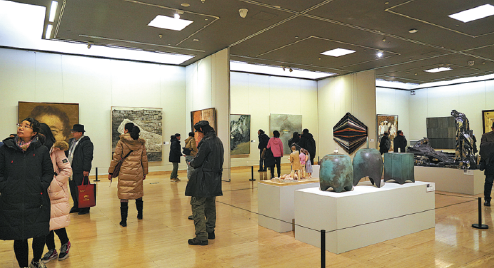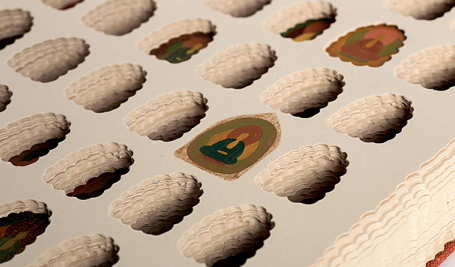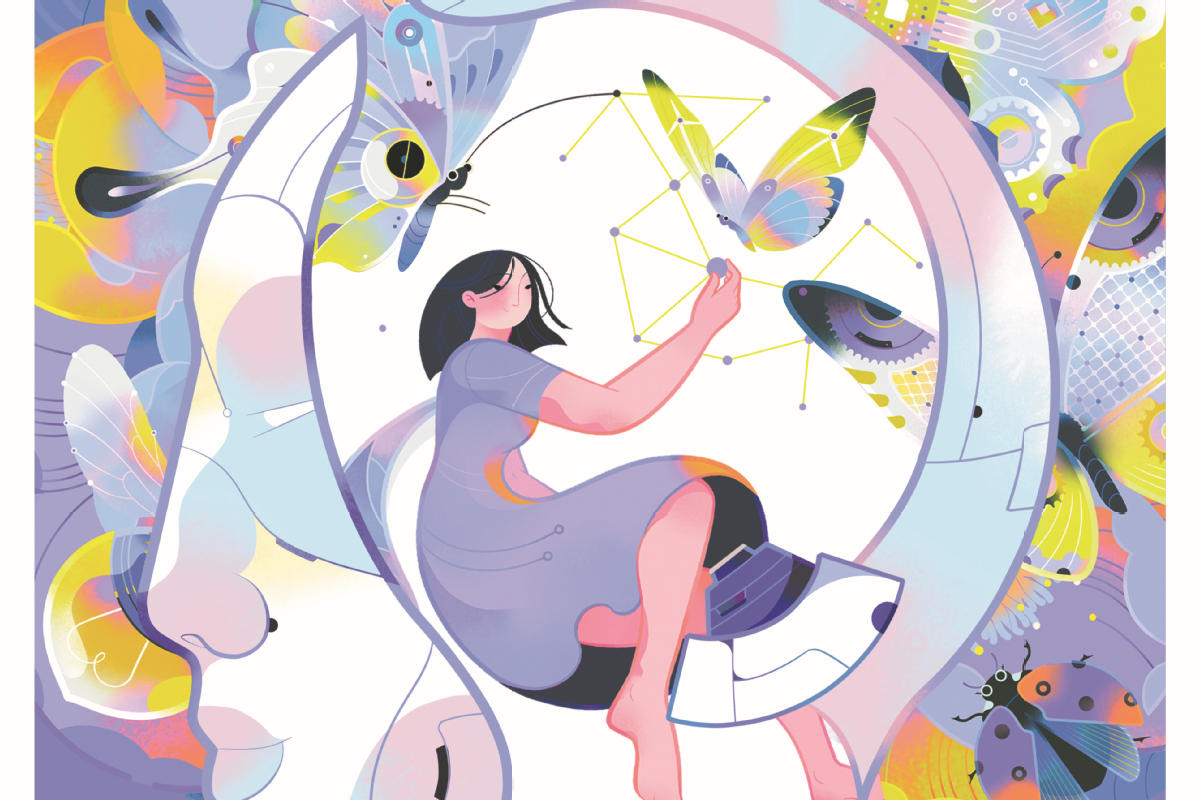Pride of place, over time
The National Exhibition of Fine Arts, held in Beijing since 1949, recently moved online amid the COVID-19 outbreak to give art lovers a virtual tour of the latest edition's award-winning works, Lin Qi reports.

The National Exhibition of Fine Arts has been held every five years since 1949 to offer the public a glimpse of diverse artists' exploration of various media and, more importantly, their reflections on social development and shifts in people's mentality.
The national exhibition was first staged in Beijing in July 70 years ago, as a sideline event of the national congress of representatives of literary and art circles, three months before the ceremony declaring New China's founding.
It showed more than 600 paintings, woodcuts, sculptures, sketches, comics and pieces of folk art for two weeks at the Central Academy of Fine Arts.
Its conclusion was followed by the founding of the China Artists Association, which took over organization of the national exhibition in the following decades.
Artists across the country submit works to a jury.
Entrant pieces are displayed at subdivision exhibitions in several cities. Each is dedicated to different categories, such as classical Chinese painting, calligraphy, oil painting and sculpture.
The finalists will enter the national exhibition, usually held in Beijing, which serves as the climax and curtain call of the yearlong event.
The 13th National Exhibition of Fine Arts was shown at the National Art Museum of China from Dec 20 through Jan 14. Now, people can view all the entrant artworks by visiting a special website dedicated to the exhibition and the China Artists Association's WeChat account.
People can take a virtual tour of the national exhibition at the National Art Museum in Beijing, where award-winning works were on show. And they can also view the subdivision exhibitions previously held in different cities, including Guangzhou, Guangdong province, Jinan, Shandong province, and Chongqing.
As time moves on and people's ways of life evolve, the national exhibition increasingly includes works from more segments of art to meet audiences' changing tastes.
For example, sections on ceramics, lacquer ware, experimental art and animations have been added over the years.
One highlight that grabbed a lot of attention at the latest 13th National Exhibition of Fine Arts was works of design, which included graphic, industrial, costume, environmental and architectural creations. They were among the dozens of gold, silver and bronze medals.
Works of design were first introduced at the national exhibition in 1999, with the hope of envisioning a future for China's design industry "grounded in the country's reality of natural resources and addressing sustainable development as a shared mission of the world", says Du Dakai, a professor of Tsinghua University's Academy of Art and Design and a member of the national exhibition's judging panel.
The 13th National Exhibition of Fine Arts showed designs that demonstrate creators' efforts to incorporate technological advancements with a pursuit of good taste, whether their work centers on a major city project or a daily object.
Song Xiewei, who heads the School of Design of the Central Academy of Fine Arts in Beijing, says works featured at the latest exhibition showed a close link between Chinese designs and the country's economic and cultural development. And homegrown designers have advanced to the front of the international stage.
The conceptual design of the Flydream magnetic suspension train, a joint work by Zhang Lie and Kong Cuiting from Beijing that won a gold medal at the latest national exhibition, sets an example. The two were inspired by the forceful, speedy movements of creatures, such as the orca, when designing the shape of a 200-meter-long train that can reach a speed of 600 kilometers per hour, a design goal.
Song, a national exhibition juror, says the Flydream train stands as an example of the design, manufacture, use and international marketing of China's high-speed trains.
He adds it also helps people envision more possibilities of the trains' exteriors and interiors with the assistance of increasingly intelligent designs.
Some designs reflect a trend of integrating Chinese aesthetics into modern lifestyles.
Fashion designer Li Aihong, from Zhejiang province, won silver for using traditional fabrics of the Dong ethnic group to create a set of clothes called Yilu Wennuan ("warmth").
"Dong people have preserved a 1,000-year-old technique of producing handmade cotton cloth called liang bu. Plant dyes render a purple hue and a texture that are mysterious and serene," Li says.
"I was captivated by the cloth at first sight. It bears the warmth of the people who've worn it for centuries and conveys their belief in harmony with nature."
Li uses digital cutting technology to transform the ancient cloth into new material with an elaborate sculptural form.
She says she has consequently been able to revive the "wisdom of ancient people" by meeting modern fashionistas' demand for "functional, free and flexible" attire.
Designers have played a role in reinventing the charm of physical books and brick-and-mortar bookstores in the digital age.
Xu Xiaoding and Dong Xueling, from Beijing, got a bronze medal at the national exhibition for their design of a thread-bound book titled Amitabha Sutra.
The pair bored holes into some of the book's pages, through which readers see drawings of the Buddha the same size as the holes as they flip through.
The design reconstructs a scene of Buddhist statues found in rows of caves in the Kizil Grottoes in the Xinjiang Uygur autonomous region. The drawings approximate the palette of the actual murals.
Tsinghua University Art Museum's deputy director Su Dan, who was a judge of the design section, says every winning piece "is convincing, keeps pace with the times and advocates a new aesthetic idea", while seeking solutions for current social concerns and looking toward the future.
Hang Jian, a design professor at the China Academy of Art in Hangzhou, Zhejiang province, says important original designs shouldn't lead to "a conservative, superficial understanding of traditions. What it really means is that the designs should be in line with the daily lives and solve the problems of Chinese people".




Today's Top News
- Xi congratulates Jose Antonio Kast on election as Chilean president
- China urges opposition to Japanese official's remarks about possessing nuclear weapons
- Ukraine says latest peace talks with US, Europe 'productive'
- Asia's rise and Europe's structural decline
- Economic stability a pillar of China's national security
- Xi taps China's deep wisdom for global good






























